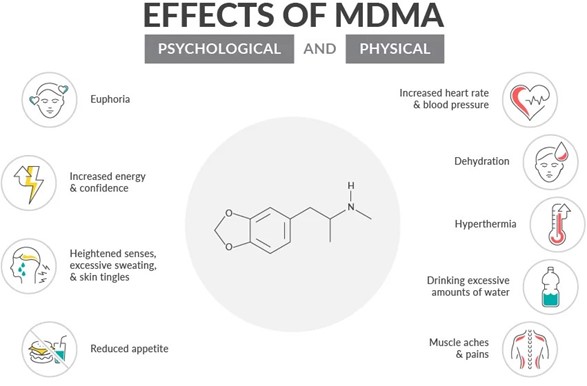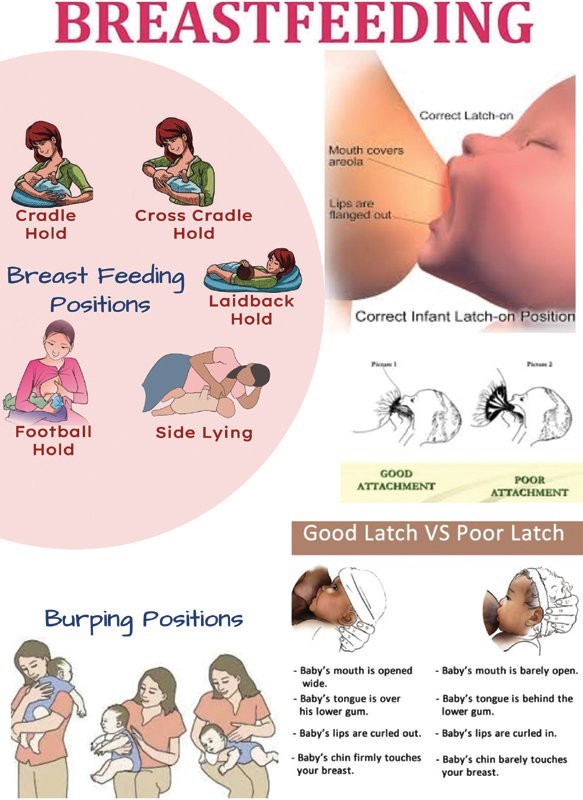A nurse in an urgent care clinic is caring for a client who reports recently using methylenedioxy-methamphetamine. Which of the following findings should the nurse expect?
Hypothermia
Somnolence
Hallucinations
Muscle weakness
The Correct Answer is C
MDMA, commonly known as ecstasy or Molly, is a stimulant drug that affects the central nervous system. It primarily acts on serotonin, dopamine, and norepinephrine neurotransmitters. The use of MDMA can lead to altered perception, increased sensory awareness, and hallucinations. Hallucinations may involve visual, auditory, or tactile sensations that are not based on reality.
The other findings mentioned—hypothermia (abnormally low body temperature), somnolence (excessive sleepiness), and muscle weakness—are not typically associated with MDMA use. Instead, MDMA use may lead to increased body temperature (hyperthermia), increased energy levels, agitation, increased heart rate, and muscle tension.

Nursing Test Bank
Naxlex Comprehensive Predictor Exams
Related Questions
Correct Answer is A
Explanation
Hyponatremia refers to a lower-than-normal level of sodium in the blood. Sodium is an essential electrolyte involved in various bodily functions, including maintaining fluid balance and transmitting nerve impulses. When sodium levels are low, it can lead to fluid imbalances, affecting the function of muscles and nerves. Muscle cramps are a common manifestation of hyponatremia and occur due to alterations in muscle excitability and contractility.
Constipation: Constipation is not typically associated with hyponatremia. It can occur due to various reasons, such as dietary factors, lack of physical activity, or other medical conditions, but it is not a direct consequence of low sodium levels.
Hypertension: Hyponatremia is not usually associated with hypertension (high blood pressure). Hypertension can be caused by several factors, including genetics, lifestyle, and certain medical conditions, but it is not directly related to low sodium levels.
Blurred vision: While blurred vision can occur in some medical conditions, such as diabetes or certain eye disorders, it is not a typical finding in hyponatremia. Visual disturbances are not a direct consequence of low sodium levels.

Correct Answer is D
Explanation
When a mother states that she should have her baby latch on to both the nipple and areola during breastfeeding, it demonstrates an understanding of the correct latch technique. A proper latch involves the baby taking in not just the nipple but also a portion of the surrounding areola. This ensures effective milk transfer and helps prevent nipple soreness or damage.

"My baby should breastfeed 5 to 10 minutes on each breast": This statement is not entirely accurate. It is important to understand that breastfeeding duration can vary among infants, and there is no fixed timeframe for how long a baby should breastfeed on each breast. Some infants
may nurse for shorter periods, while others may take longer. The focus should be on ensuring that the baby is effectively nursing and getting enough milk rather than adhering strictly to a specific time limit.
"I should keep my baby on a strict feeding schedule": This statement is incorrect. Breastfeeding on demand, also known as responsive feeding, is generally recommended for newborns.
Newborns should be fed whenever they show signs of hunger, such as rooting, sucking motions, or increased alertness. Strict feeding schedules can interfere with the baby's natural feeding cues and hinder milk supply establishment.
"I should not wake my baby during the night to breastfeed": This statement is not accurate, especially for a 5-day-old newborn. Newborns typically need frequent feeding, including during the night, to meet their nutritional needs and support proper growth and development. It is generally recommended to wake a sleeping newborn every 2-3 hours during the night to ensure adequate feeding and prevent excessive weight loss.
Whether you are a student looking to ace your exams or a practicing nurse seeking to enhance your expertise , our nursing education contents will empower you with the confidence and competence to make a difference in the lives of patients and become a respected leader in the healthcare field.
Visit Naxlex, invest in your future and unlock endless possibilities with our unparalleled nursing education contents today
Report Wrong Answer on the Current Question
Do you disagree with the answer? If yes, what is your expected answer? Explain.
Kindly be descriptive with the issue you are facing.
